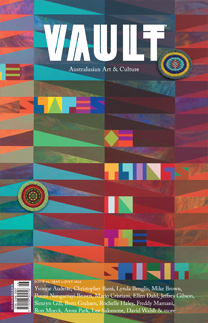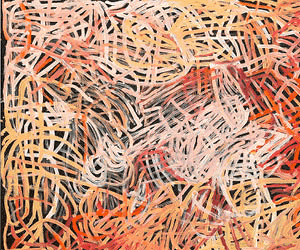Sigmar Polke
The Great Alchemist
As his major retrospective opens at Tate Modern, VAULT reflects on the prodigious career and profound output of the late Sigmar Polke.
This month sees the opening of the blockbuster retrospective exhibition Alibis: Sigmar Polke 1963–2010 at Tate Modern. The show comprises 265 works spanning five decades of the artist’s career. When it was staged earlier this year at MoMA, New York, New Yorker critic Peter Schjeldahl claimed it was “the most dramatic museum show of the century to date”.
Polke, who died of cancer in 2010, aged 69, has had a major influence on a whole slew of younger artists, including fellow Germans Martin Kippenberger and Albert Oehlen, and Americans Richard Prince, Julian Schnabel and David Salle. Through the 1980s and 1990s, many younger Australian artists were also influenced by his anarchic ‘mix-n-match’ approach to image making.
In readiness for the exhibition, which opens as this article goes to press, Tate Modern has had the walls around the roped-off entrance painted in jarring fuchsia and primrose-yellow. In the manner of curators everywhere nowadays, the aim, however presumptuous, has clearly been to ‘lend a hand’ to the artist and to join in with the ‘joke’ by offering a ‘playful’ anticipation of the clashing of styles, techniques, visuals and material in the works themselves, which seems just a little intrusive and fits into the now familiar trope of art exhibition as fun fair.
The Polke family were refugees, first from Lower Silesia (now part of present-day Poland) in 1945 when Germans were expelled from the region, and again in 1953 when his parents and their eight children escaped from... Subscribe to read this article in full
























